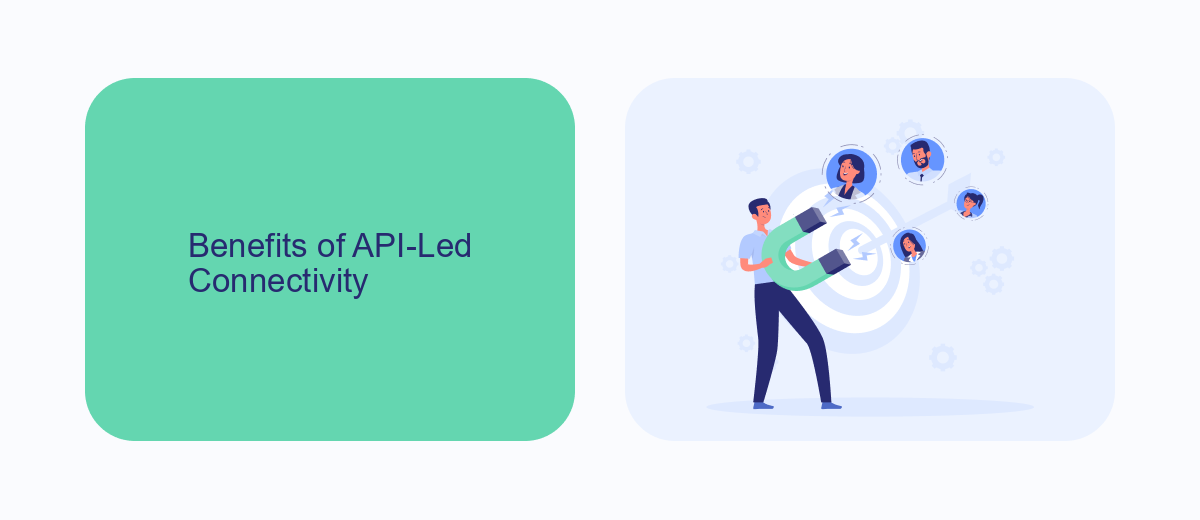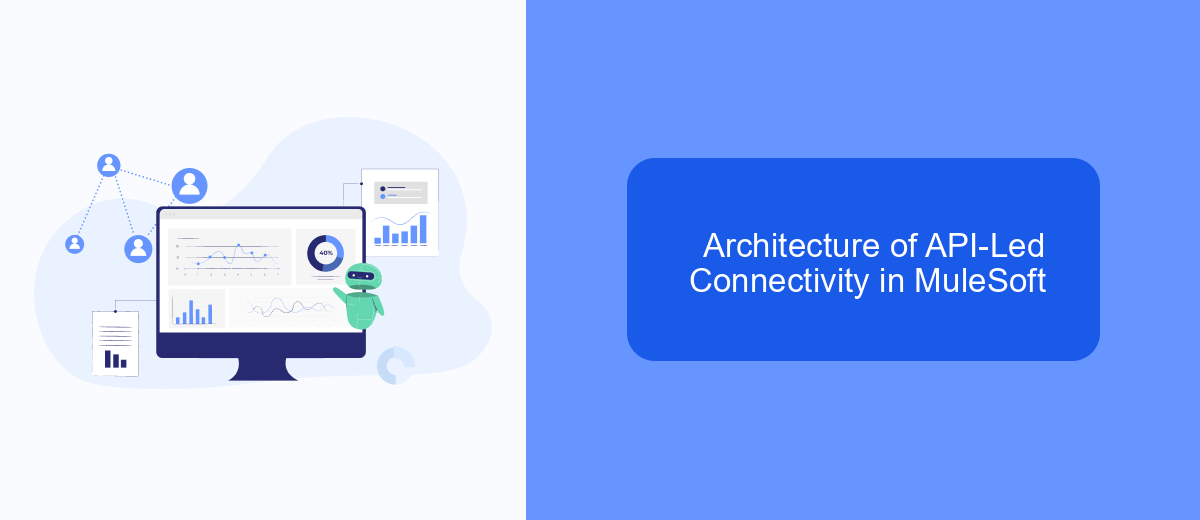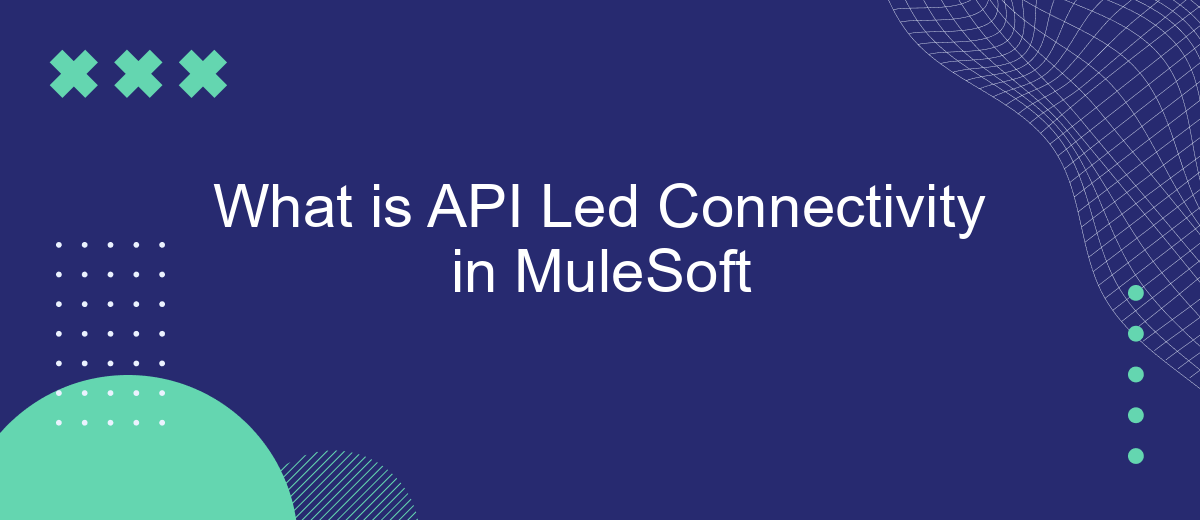API Led Connectivity is a design approach in MuleSoft that streamlines integration by structuring APIs into three layers: System, Process, and Experience. This method enhances agility, reusability, and scalability, allowing businesses to quickly adapt to changing needs. By leveraging this approach, organizations can efficiently connect applications, data, and devices, driving digital transformation and innovation.
Introduction
API Led Connectivity is a design approach in MuleSoft that emphasizes the creation of reusable and manageable APIs to streamline integration processes. This methodology aims to break down complex systems into modular components, making it easier to connect and manage different applications and data sources. By leveraging API Led Connectivity, organizations can achieve faster time-to-market, improved agility, and better scalability.
- System APIs: These APIs provide a means to access core systems of record and manage underlying data.
- Process APIs: These APIs orchestrate data and processes across multiple systems and services.
- Experience APIs: These APIs are tailored to specific user experiences, providing data in the required format to various channels.
One of the tools that can complement API Led Connectivity is SaveMyLeads, a service that automates lead data integration between different platforms. By using SaveMyLeads, businesses can effortlessly sync their lead information, reducing manual effort and ensuring data accuracy. This enhances the overall integration strategy, making it more efficient and reliable.
Benefits of API-Led Connectivity

API-Led Connectivity offers numerous benefits, especially in the context of modern digital transformation initiatives. By structuring APIs into three distinct layers—System, Process, and Experience—organizations can achieve greater agility and flexibility. This layered approach allows for the reuse of APIs across different projects, reducing development time and costs. Moreover, it simplifies the integration process, enabling faster and more efficient connections between disparate systems and applications.
One of the key advantages of API-Led Connectivity is enhanced scalability. As business needs evolve, new APIs can be easily added or existing ones modified without disrupting the entire system. This modular architecture also supports better security practices, as each API can be individually monitored and secured. Services like SaveMyLeads can further streamline the integration process by providing pre-built connectors and automated workflows, ensuring seamless data flow between various platforms. Ultimately, API-Led Connectivity empowers organizations to innovate quickly and respond to market changes with greater agility.
Key Features of API-Led Connectivity in MuleSoft

API-Led Connectivity in MuleSoft revolutionizes how businesses approach integration by promoting a modular and reusable architecture. This approach enhances agility, scalability, and security, making it easier to connect applications and data across the enterprise.
- Layered Approach: API-Led Connectivity employs a three-layered architecture consisting of System APIs, Process APIs, and Experience APIs. This segmentation ensures that each layer serves a specific purpose, improving maintainability and reusability.
- Reusability: By creating reusable APIs, businesses can significantly reduce development time and costs. These reusable components can be easily adapted for different projects, promoting consistency and efficiency.
- Security: MuleSoft provides robust security features, including OAuth, JWT, and TLS, ensuring that data is protected at every layer of the integration.
- Scalability: The architecture supports horizontal scaling, allowing businesses to handle increased loads seamlessly. This is essential for growing enterprises that need to manage a large number of API calls.
- Integration with External Services: Tools like SaveMyLeads can be easily integrated into MuleSoft's API-led connectivity framework, enabling automated data transfers and real-time updates across various platforms.
In summary, MuleSoft's API-Led Connectivity offers a structured and efficient way to manage integrations, driving business agility and innovation. The approach not only simplifies the integration process but also ensures that systems can evolve and scale as needed.
Architecture of API-Led Connectivity in MuleSoft

API-Led Connectivity in MuleSoft is an architectural approach that enables organizations to integrate and connect applications, data, and devices through reusable and purposeful APIs. This methodology structures APIs into three layers: Experience APIs, Process APIs, and System APIs, each serving a distinct role in the integration process.
The architecture is designed to promote agility, scalability, and reusability. Experience APIs are tailored for specific user experiences and are designed to meet the needs of various channels such as mobile apps, web interfaces, or third-party systems. Process APIs handle the orchestration and business logic, integrating data from multiple sources and transforming it as needed. System APIs provide direct access to core systems and data sources, abstracting the complexity of underlying systems.
- Experience APIs: Tailored for specific user experiences.
- Process APIs: Manage orchestration and business logic.
- System APIs: Access core systems and data sources.
Tools like SaveMyLeads can complement this architecture by automating the integration of various services, making it easier to connect different applications and streamline workflows. By leveraging API-Led Connectivity, organizations can achieve more efficient and flexible integrations, ultimately driving innovation and business growth.
Use Cases of API-Led Connectivity
API-led connectivity in MuleSoft is particularly beneficial for organizations looking to streamline their operations and enhance their digital transformation efforts. One common use case is the integration of various enterprise systems such as CRM, ERP, and finance systems. By leveraging API-led connectivity, businesses can seamlessly connect these systems, ensuring real-time data synchronization and reducing manual data entry errors. This leads to improved operational efficiency and more accurate decision-making.
Another important use case is enabling third-party integrations and services. For instance, platforms like SaveMyLeads can be easily integrated using MuleSoft's API-led approach. This allows businesses to automate lead data collection from various sources and directly feed it into their CRM systems. Such integrations not only save time but also enhance the quality and speed of lead management processes. Overall, API-led connectivity provides a robust framework for building scalable and reusable APIs, making it easier for organizations to adapt to changing market needs and technological advancements.
FAQ
What is API Led Connectivity in MuleSoft?
What are the benefits of API Led Connectivity?
How does API Led Connectivity improve integration processes?
Can API Led Connectivity be used with third-party integration tools?
What are the three layers of API Led Connectivity?
If you use Facebook Lead Ads, then you should know what it means to regularly download CSV files and transfer data to various support services. How many times a day do you check for new leads in your ad account? How often do you transfer data to a CRM system, task manager, email service or Google Sheets? Try using the SaveMyLeads online connector. This is a no-code tool with which anyone can set up integrations for Facebook. Spend just a few minutes and you will receive real-time notifications in the messenger about new leads. Another 5-10 minutes of work in SML, and the data from the FB advertising account will be automatically transferred to the CRM system or Email service. The SaveMyLeads system will do the routine work for you, and you will surely like it.
